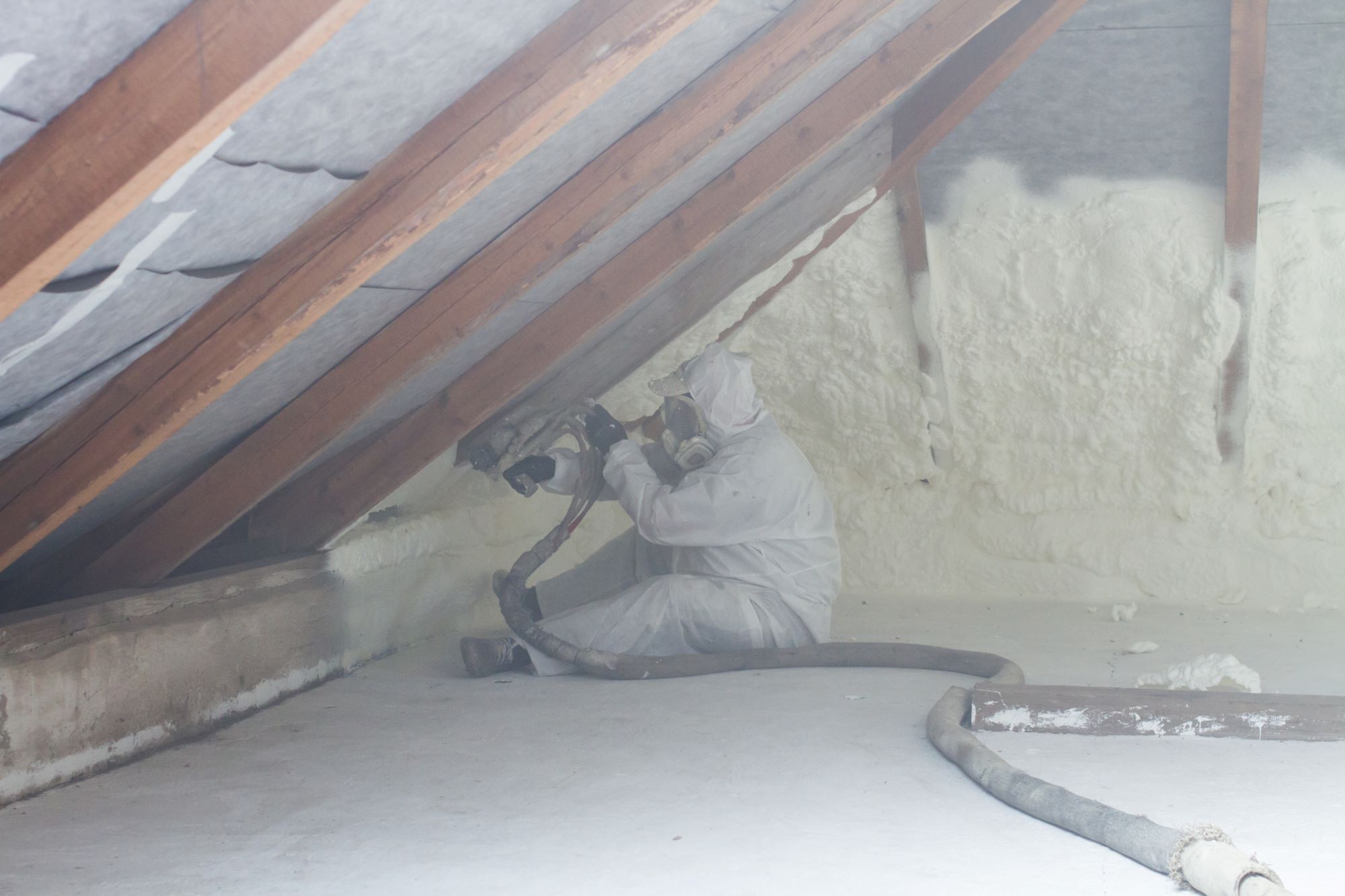If you work with spray foam insulation or finish coatings, you may be exposed to isocyanates, and should know the health effects of working with them.

Photo credit: istock.com/c12
Exposure to isocyanates — chemicals released into the air by varnishes, paints, coatings, and insulating spray foams — is often a silent exposure. Recently, I noticed on Twitter that the BC Construction Safety Alliance (BCCSA) was asking followers to share any Safety Data Sheets (SDSs) they have for products and materials containing isocyanates. BCCSA is gathering information to develop resources on isocyanate exposure in the workplace.
Isocyanates are released into the air during plastic manufacturing and when using polyurethane products. Polyurethane products are common in construction, automotive painting, and manufacturing, and workers in these industries are most likely to be exposed to isocyanates.
WorkSafeBC’s safety bulletin Isocyanates in industry has information about the types of products that contain these chemicals and their health hazards.
Symptoms and effects of isocyanate exposure
“People are being exposed to isocyanates without knowing it,” says Felix Wang, an occupational safety officer with WorkSafeBC. He tells me that isocyanates are designated as hazardous chemicals and have established Occupational Exposure Limits (OELs). This means that employers must ensure workers are not exposed to levels above those OELs. (For more information on how OELs are determined and used, see my post How much is too much chemical exposure at work?)
WorkSafeBC classifies isocyanates as sensitizers. This means that workers can develop a sensitivity to them, even at low levels of exposure. Short-term exposure can lead to irritation or burning in the eyes, nose, throat, and skin. Long-term exposure can lead to a form of asthma.
Once workers are sensitized, they can no longer tolerate any exposure to a chemical. In some cases, sensitized workers will need to be reassigned or change careers because their reactions can be severe.
Customized exposure control plans
Felix says that in the construction industry, many employers and contractors need to know how to manage the risks of isocyanates.
According to this Journal of Commerce article BCCSA explores how best to safely handle hazardous isocyanates, inquiries to the BCCSA for information on using isocyanates safely have been increasing.
Employers are responsible for creating and implementing an exposure control plan suited to their workplace.
“It’s very important to assess the situation and make sure the controls implemented are appropriate to the working conditions,” Felix says. In instances where an employer has more than one workplace, they may not be able to use the same exposure control plan at every site. “They often need to adapt or modify the plan because every site is different.”
If you’re a worker and have been exposed to a harmful substance at work, you can record the exposure through WorkSafeBC’s Exposure Registry. Learn more about this on WorkSafeBC’s occupational diseases webpage.
Thank you to Felix for speaking with me — and to everyone doing their part to keep workers safe.


